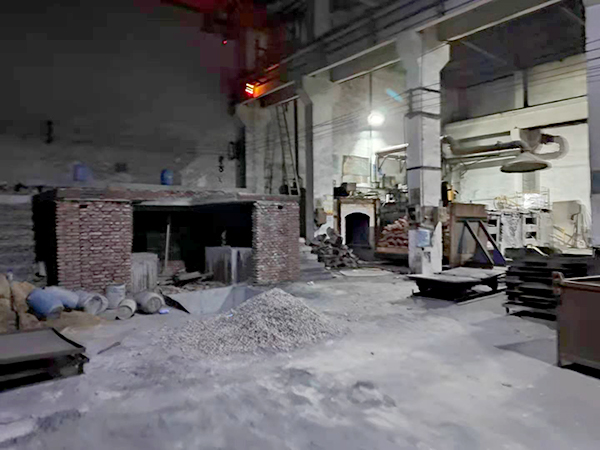With the increasing volume of our foreign trade business in recent years, our factory experienced serious capacity shortage in the second half of last year. In response to this situation, our foundry has added a new medium frequency furnace this year.
The construction of the new furnace is coming to an end. The new furnace is expected to be put into production on June 10 this year. After the new electric furnace, the annual capacity is expected to increase by 2000 tons.
Tips: Intermediate frequency furnace is a kind of power supply device that converts the power frequency of 50 Hz AC into intermediate frequency (300 Hz to 1000 Hz). It converts the three-phase power frequency AC into direct current after rectification, and then converts the direct current into adjustable intermediate frequency current to supply the intermediate frequency alternating current flowing through the capacitor and induction coil, generating high-density magnetic lines of force in the induction coil, And cut the metal material in the induction coil, which produces a large eddy current in the metal material.

The working frequency of intermediate frequency induction furnace (hereinafter referred to as intermediate frequency furnace) is between 50 Hz and 2000 Hz, which is widely used for smelting non-ferrous metals and ferrous metals. Compared with other casting equipment, medium frequency induction furnace has the advantages of high thermal efficiency, short melting time, less alloy element burning loss, wide melting material, less environmental pollution, and accurate control of temperature and composition of molten metal.
This kind of eddy current also has some properties of intermediate frequency current, that is, the free electrons of metal flow in the metal body with resistance to generate heat. A three-phase bridge fully controlled rectifier circuit is used to convert alternating current into direct current. For example, a metal cylinder is placed in an induction coil with alternating medium frequency current. The metal cylinder does not directly contact with the induction coil. The temperature of the coil itself is very low, but the surface of the cylinder is heated to redness or even melting, And the speed of reddening and melting can be achieved by adjusting the frequency and the current. If the cylinder is placed in the center of the coil, the temperature around the cylinder is the same, and the heating and melting of the cylinder do not produce harmful gas and strong light pollution.
Post time: Jun-05-2021

